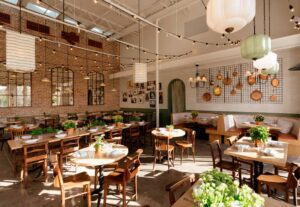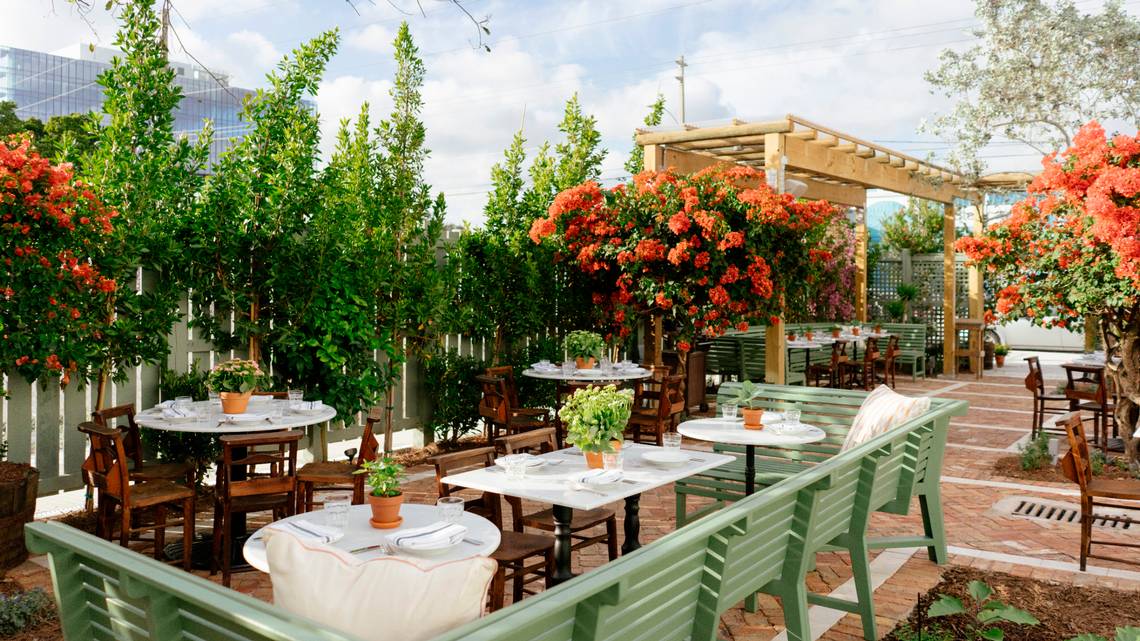CLIENT NEWS: One of New York’s popular Italian restaurants just opened in Miami with a stunning garden
February 20, 2025Carlos Suarez, founder of the popular New York restaurant Rosemary’s, grew up in Coral Gables in the 1990s, but after college gravitated to the northeast. And when it came time to open his first restaurant — named for his mother — he opened it in the West Village, then went on to expand in Tokyo, the East Village and Midtown Manhattan.
Now, 13 years later, Rosemary’s has finally made it to Miami.
The Italian restaurant from Suarez’s Casa Nela hospitality group is now open in Wynwood. Though he took his time, Suarez said that he has been working to expand south for awhile.
“I’ve been back here many times since I moved away, but I’ve always been checking in with Miami, because I have such fond memories of growing up here,” he says. “But in the past, I always recognized that Miami was probably more interested in flashy, big ticket, big night out stuff that we don’t do.”
 Miami, of course, has changed dramatically recently, a shift fueled at first by the pandemic and an influx of new residents, then by the arrival of the Michelin Guide in 2022, followed by an explosion of development, particularly in Wynwood. But Suarez first started paying closer attention as early as 2007, when Michael’s Genuine opened in the Design District, and 2009, when Mandolin Aegean Bistro joined it on the other side of the soon-to-be upscale neighborhood.
Miami, of course, has changed dramatically recently, a shift fueled at first by the pandemic and an influx of new residents, then by the arrival of the Michelin Guide in 2022, followed by an explosion of development, particularly in Wynwood. But Suarez first started paying closer attention as early as 2007, when Michael’s Genuine opened in the Design District, and 2009, when Mandolin Aegean Bistro joined it on the other side of the soon-to-be upscale neighborhood.
“Seeing the success of Michael’s and Mandolin started to plant the seed that maybe the market would mature to a place where quality neighborhood restaurants would be celebrated,” Suarez says.
By 2014, he was looking at possible spaces for a Miami Rosemary’s.
Built on the site of a former shoe warehouse and empty lot on Northwest 25th Street, the 7,000-square foot restaurant has an airy indoor dining room with high ceilings with lights strung from them and homey touches like a brick wall and a display of copper pans, an homage to Suarez’s Cuban father Raul, who loved his own copper cookware.
There’s greenery on the indoor tables and everywhere in the outdoor dining area. Designed by New York firm Dekar Design, the entrance welcomes diners with sculpted bougainvillea, and small garden beds are scattered throughout the space. Created with Little River Cooperative’s help, the beds of greens, vegetables, herbs and edible flowers are used in several dishes.
 The gardens are a nod to Suarez’s English mother and her vegetable garden in Lucca, Italy (the Suarezes spent about 20 years in South Florida as a family but also lived in Asia and Europe). The New York locations of Rosemary have rooftop gardens, too.
The gardens are a nod to Suarez’s English mother and her vegetable garden in Lucca, Italy (the Suarezes spent about 20 years in South Florida as a family but also lived in Asia and Europe). The New York locations of Rosemary have rooftop gardens, too.
Having lived in South Florida, Suarez is well aware of Miami’s wet summers, and his team will be installing retractable awnings over much of the outdoor dining area and the outdoor bar.
“There’s the success of Mandolin to point to as a restaurant that’s thrived despite being 90 percent outside,” Suarez says. “But we are taking steps to enclose when necessary.”
The kitchen is helmed by executive chef Craig Giunta, a former chef at Miami Beach’s beloved Macchialina who also worked at Mother Wolf and Concours Club. Rosemary, obviously, is a special theme on the menu: Don’t skip the rosemary foccaccia or spectacular rosemary potatoes, and note that the water is also infused with fresh sprigs of the herb.
The menu leans toward pasta and seafood , with a few specialties only available in Miami, like the bluefin tuna crudo with citrus, coriander, basil and fennel from the garden; linguini with Florida rock shrimp, lemon bomba chilis and garlic; and Heritage porchetta with zucchini salad and Calabrian date hot sauce.
Other choices include orecchiette with sausage, broccoli rabe, Fresno chili and Parmigiano and pappardelle verde with veal Bolognese, a white Bolognese sauce.
Dessert options include an olive oil cake draped in blueberry compote, and hot, crispy Bombolini, Italian doughnuts served with a Nutella sauce.
Suarez says that despite the number of Italian restaurants in the area — the swanky, nightclub-esque Sparrow Italia just down the street, and Pasta and Otto & Pepe not far away, for example — thanks to Miami diners’ passion for food, the neighborhood can sustain multiple restaurants and that the gorgeous outdoor area sets Rosemary’s apart.
“The menu is probably similar to places like Pasta and Otto & Pepe, but we brought a garden. We’re really trying to lean into local sourcing and growing our produce,” he says. “We’re low key, high quality. We want to prove great dining experiences don’t need to be expensive or flashy, and they definitely don’t need to be expensive.”




















































